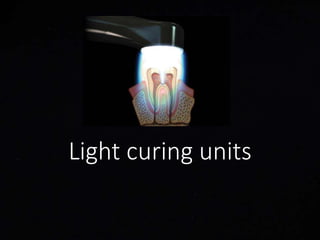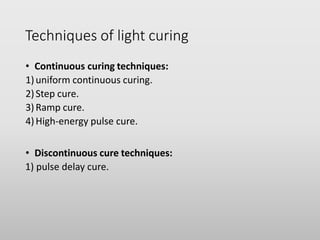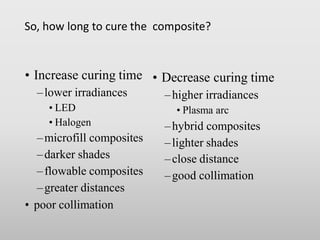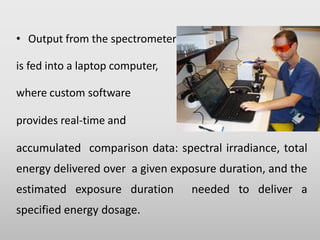This document discusses light curing units used in dentistry to polymerize resin-based composites. It describes the advantages of light curing over self-curing composites. The key components of light curing units and different types are outlined, including quartz tungsten halogen, plasma arc, laser and LED lights. Factors that influence curing such as distance, exposure time, techniques and temperature rise are summarized. General considerations for use and maintenance of light curing units are also provided.






















































































